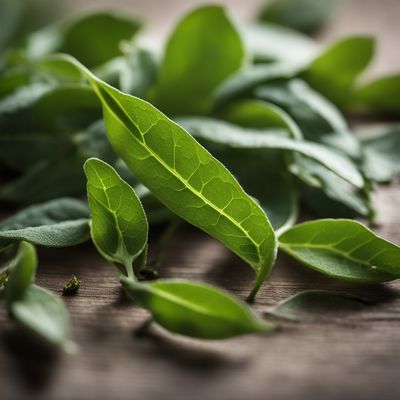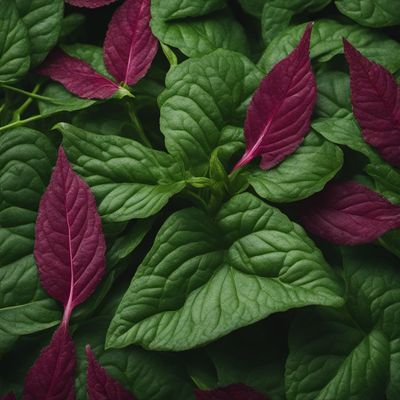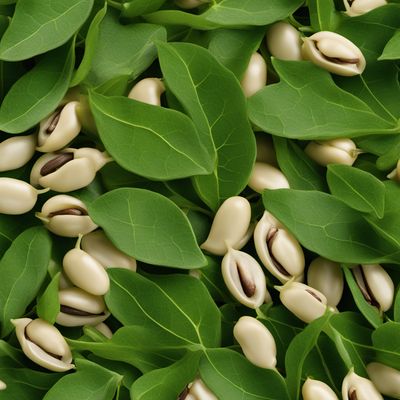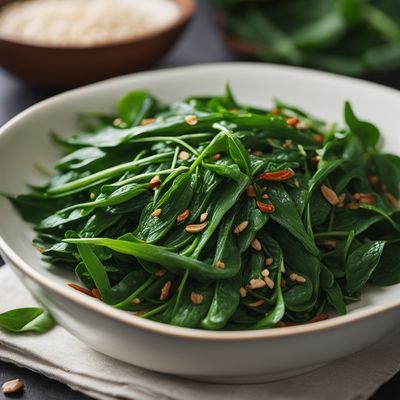
Ingredient
Spinaches
The Mighty Leafy Green
Spinach is a versatile leafy green that is packed with essential nutrients, including iron, vitamins A and C, and fiber. Its mild and slightly earthy flavor, tender texture, and vibrant green color make it a popular choice in salads, smoothies, stir-fries, and soups.
Origins and history
Spinach is believed to have originated in ancient Persia (modern-day Iran) and was later introduced to Europe in the 12th century. It gained popularity during the Renaissance and has since become a staple in many cuisines worldwide. Spinach is known for its association with Popeye the Sailor Man, who famously gained strength from eating this leafy green.
Nutritional information
Spinach is low in calories and rich in nutrients, including iron, calcium, vitamins A and C, and folate. It is also a good source of dietary fiber.
Allergens
Spinach may cause allergic reactions in some individuals, particularly those with a history of allergies to other leafy greens or plants in the same family, such as chard or beets.
How to select
When selecting spinach, look for vibrant green leaves that are crisp and free from yellowing or wilting. Avoid any leaves that appear slimy or have a strong odor. Opt for organic spinach whenever possible to minimize exposure to pesticides.
Storage recommendations
To store spinach, remove any rubber bands or ties and place the leaves in a plastic bag or airtight container. Store it in the refrigerator's crisper drawer, where it can stay fresh for up to a week. Avoid washing spinach before storing, as excess moisture can cause it to spoil faster.
How to produce
Spinach can be easily grown in home gardens or containers. It thrives in cool weather and requires well-drained soil and regular watering. Sow the seeds directly in the garden or start them indoors and transplant the seedlings once they are a few inches tall.
Preparation tips
Spinach can be enjoyed raw in salads, sautéed as a side dish, or added to soups, stews, and pasta dishes. It can also be blended into smoothies or used as a filling in savory pies and quiches. To retain its vibrant color and nutrients, cook spinach briefly and avoid overcooking.
Substitutions
Kale, Swiss chard, and collard greens can be used as substitutes for spinach in most recipes. However, keep in mind that these greens have slightly different flavors and textures.
Culinary uses
Spinach is a versatile ingredient that is commonly used in salads, pasta dishes, omelets, quiches, and soups. It is also a popular addition to smoothies and green juices.
Availability
Spinach is widely available in grocery stores, supermarkets, and farmers markets throughout the year. It is cultivated in many countries, including the United States, China, India, and Italy.
More ingredients from this category

Cassava leaves
The Green Delight: Unveiling the Nutritional Powerhouse of Cassava Leaves

Oraches leaves
The Versatile Green: Oraches Leaves

New Zealand spinaches
The Versatile Green Delight

Garland chrysanthemums leaves
Edible Blossoms

Bitterleaves
The Bitter Beauty

Sweet potato leaves
The Leafy Marvel

Amaranth leaves
The Nutrient Powerhouse: Exploring the Versatility of Amaranth Leaves

Bitterblad leaves
The Bold and Bitter Bites: Exploring the World of Bitterblad Leaves

Black eyed peas leaves
Leafy Goodness

Tannia leaves
The Versatile Tannia Leaves
Recipes using Spinaches » Browse all

Stir-Fried Water Spinach with Garlic
Garlicky Delight: Stir-Fried Water Spinach Vietnamese Style

Djiboutian Tarte al d'jote
Savory Spinach Tart with Djiboutian Flair

Croatian Spinach and Cheese Pita
Savory Delight: Croatian Spinach and Cheese Pita

Fijian Coconut Chicken Mumu
Tropical Delight: Fijian Coconut Chicken Mumu

Somali-style Spinach and Cheese Rolls
Savory Somali Spinach Delights

Vegan English Breakfast
Plant-Powered English Delight

Wrap Roti
Caribbean Delight: Flavorful Wrap Roti

French-inspired Mbriulata
Savory French Twist: Mbriulata with a Touch of Paris

Pèpè Soup with a Twist
Spicy and Flavorful Pèpè Soup Infused with Exotic Ingredients

Nasi Pecel with Spicy Peanut Sauce
Indonesian Delight: Nasi Pecel - A Flavorful Journey to the Tropics

Epirotic-style Stuffed Squid
Squid Delight: Epirotic Stuffed Calamari

Uruguayan Spinach Empanadas
Savory Delights: Uruguayan Spinach Empanadas - A Taste of Uruguay's Flavors